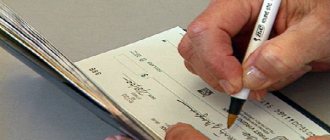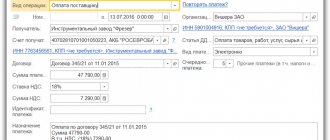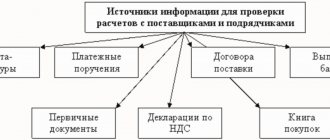Why deposit personal money into a current account?
Ivan registers as an individual entrepreneur and opens a coffee shop.
Nobody knows about the coffee shop - so far only random passers-by and friends drop by. It’s good that Ivan brews delicious coffee - people are starting to recommend it. But in the first month of work, expenses are still higher than income. It's time to pay the rent: Ivan replenishes his current account with personal money.
In six months, Ivan recoups half of his investment and even hires a barista. The barista convinces the entrepreneur that buying a new coffee machine is a smart move because the coffee will taste even better. And if you launch an advertising campaign, there will be a line in the coffee shop. Ivan agrees and again deposits cash into the checking account.
The barista was right: business is looking up. A year later, Ivan is already opening a second coffee shop and preparing documents to launch a franchise. But the renovation of a new premises and the services of a lawyer are expensive. There is not enough money in the current account, and the entrepreneur replenishes it again.
Ivan could have other reasons for replenishing: paying off debts to partners, settling accounts with employees, paying taxes and insurance premiums. It is important that Ivan makes all business-related expenses from his current account. If you purchase equipment, pay suppliers and pay salaries using a personal card, there will be no expenses on your current account. This is bad if you pay tax on profits: expenses from a personal card cannot be taken into account as business expenses - the tax will be higher. To avoid this, pay business expenses from the individual entrepreneur’s account.
What about taxes?
Typically, an individual entrepreneur who uses the simplified taxation system (STS) deposits funds into his bank account to pay the office landlord. And the question of writing off tax from the payment amount is also very acute for him.
The individual entrepreneur who deposits his funds into the account is not the person forming the tax base. And his own money is not recognized as income, since it is not directly related to the sale of goods or the provision of any services.
An individual entrepreneur has the right to spend any amount for his own needs, including replenishing the company’s current account from his own pocket. But in this case, you need to prepare the appropriate documents. And if the tax office receives a request-claim regarding a specific payment, then send there a document that states all the amounts of funds received and their purpose.
Purpose of payment when replenishing an individual entrepreneur's current account
To prevent the tax authorities from considering the transfer as income, the purpose of the payment must explain that this is the entrepreneur’s personal money. You can indicate the purpose in free form. For example, “depositing your own funds” or “replenishing with personal money.”
If you don't do this, the tax office will think that you are evading taxes. The inspector will see that you received the transfer, but did not indicate it in the declaration. Even if you have paid regularly for several years before, the inspector is obliged to issue a fine. After the transfer, it is difficult to prove that it was personal money.
The money must be transferred on behalf of the owner of the current account - that is, the entrepreneur. The tax authorities will regard a transfer from a relative as income from business activities - you will have to pay tax on it.
Is contributing your own funds income?
The concept of own funds for individual entrepreneurs is very vague. He is fully responsible for his activities with personal property and capital. The checking account is just another “pocket” where he can put money. If an individual entrepreneur deposits his personal savings into a bank account for a business, is this considered income in the eyes of the tax authorities?
For entrepreneurs using the simplified tax system and OSNO, the relevant question is whether a contribution of personal funds from an individual entrepreneur is income and how to contribute money so as not to pay taxes? After all, any income increases the amount of taxes payable. The key to success is the correct execution of the operation.
If the deposit method allows comments or the purpose of payment, replenishing the account with your own funds can be designated as “Replenishing the account with personal savings”, “Depositing your own funds” or other similar wording. For example, when depositing money through a corporate card (self-collection), the ATM usually does not allow you to choose the purpose of the payment or add a comment - which means that such a contribution of your own funds is income.
Personal funds contributed are not taken into account in KUDiR. Accounting services also allow you to register such a receipt in such a way that the money will not be reflected either in revenue or in the final tax reporting.
If, nevertheless, as a result of depositing personal money, the entrepreneur receives a letter with a claim from the tax office, in response it is necessary to send documents describing all incoming amounts. Proceedings on such matters can take quite a long time, so it is important to always correctly indicate the purpose of the payment - whether it is an individual entrepreneur’s contribution from his savings or revenue from his main activity.
How to deposit money into a current account
Transfers cost money, and you will have to pay twice: to the bank through which you send, and to the bank where the current account is opened. To find out how much a transfer will cost, check the rates on the bank's website or ask the cashier. There are four ways to top up your account:
- Transfer from card. You can transfer money to an individual entrepreneur's account from a card of any bank. This can be done in your personal account on the bank’s website or in the mobile application - just know the account number or card that is attached to it. The method works wherever there is Internet.
- Top up via ATM. The first option is to insert the card attached to your current account and top it up in the usual way. The second option is to find the “replenishment of current account” item in the ATM menu, indicate the login and password issued by the bank, then deposit money. Not all banks have this feature. Information about the commission for replenishing your account is displayed on the ATM screen.
- Replenishment at the bank cash desk. To top up through the bank's cash desk, you need to come to the branch with your passport. The sending bank charges a commission for the transfer. The cashier will give accurate information about the commission and help you correctly fill out your account.
- Translation through the translation system. These are companies that transfer money for interest - Contact, Unistream and others. The commission is usually around 2%. The translation can be made at the company's office or through the website. Tariffs are on the website, but you can also find out from the cashier. To make a transfer you will need a passport and current account number.
Cash deposits can take up to 5 business days, while card transfers usually arrive within 1 day. If the card and current account are serviced by the same bank, there will be no commission for the transfer.
Replenishment methods
There are several ways to top up an individual entrepreneur’s current account. The speed of the procedure, availability and size of the commission depend on the chosen option.
Cash via bank
If there is time, the entrepreneur has the right to contact the bank branch in person and ask the employee to top up the account. You only need to have your passport with you. You can use an ATM to transfer funds. This is very convenient, since many payment devices operate around the clock, and there is no need to adapt to the operating hours of a banking institution.
Important! To avoid paying a commission, you should contact the bank where it is opened.
When replenishing through a third-party banking institution, you cannot do without a commission. The amount of the fee depends on the specific organization, so you should check in advance.
Depositing funds through a bank cash desk is a convenient method, but it requires travel time and long lines. It is necessary to choose the time of your visit to adapt to the operating hours of the institution. Businessmen do not have a lot of time, so they often turn to nearby banks, not paying attention to the size of the commission for depositing money into an account.
From personal account
If a businessman has a personal bank account, you can transfer funds from it to a bank account. To do this, you don’t have to go to the bank, just use Internet banking and transfer money between your accounts. This is a very convenient method that does not require much time.
A commission is charged if accounts are opened at different banking institutions. Therefore, it is better to take care of service in one organization.
From a bank card
Transferring funds is allowed from a bank card. In this case, you do not need to visit the bank office. All you need to do is use online banking, log into your personal account and make a payment without leaving your home. You will need to enter your account details. This is the most convenient option for replenishing your account, according to reviews from entrepreneurs. After all, you don’t need to go anywhere, funds are transferred instantly, and you can make a transfer at any time of the day or night.
Note! Making a transfer is not subject to commission if the card and account are opened in the same banking institution. In other cases, a fee is charged, the amount of which depends on the specific bank.
Many businessmen use the services of Sberbank. For the convenience of clients, this organization has created an online bank and a mobile application.
The procedure for transferring personal money of an individual entrepreneur through Sberbank Online to a bank account is as follows:
- Enter your login and password to gain access to your personal account.
- Go to the "Payments and Transfers" section.
- Select the item with transfers between your accounts.
- Fill in the form.
- Confirm the transaction using the code from SMS.
The procedure takes literally 2-3 minutes. Sberbank does not charge a transfer fee unless you transfer to another bank, for example, to Tinkoff.
Where can you spend personal money from your current account?
Once personal money is deposited into a current account, it ceases to be personal. Now it's business money. You can spend them on business expenses: pay rent and supplies, transfer salaries, purchase equipment.
If your bank allows, you can spend the money you earn on personal needs directly from your current account. For this purpose, banks offer corporate cards linked to a current account. Such a card can be given to employees so that they can purchase office supplies or pay for lunch with a client.
Is the money contributed the income of the entrepreneur?
How can an individual entrepreneur withdraw money from a current account for personal needs? How much can you withdraw?
The tax office does not recognize own funds as income included in the tax base. However, Federal Tax Service employees may ask for clarification about the sources of these resources. Typically, demands for explanations come to those individual entrepreneurs who often contribute personal money and operate at a loss. Therefore, whenever possible for an individual entrepreneur, depositing personal funds into the individual entrepreneur’s account should be limited to minimum amounts.
Note! Otherwise, the businessman must be prepared for written and oral explanation.
A contribution of an individual entrepreneur's own funds to a current account is considered income only if an incorrect transaction code is specified when replenishing. Typically, bank employees tell beginning entrepreneurs that in order to replenish their account tax-free, they must indicate the type of transaction “own funds.”
If you specify “revenue,” the receipt will be considered income. It will need to be taxed according to accounting requirements. Or the entrepreneur can contact the bank to change the purpose of the posting.
An individual entrepreneur can spend money on purposes related to business activities
What you need to remember about depositing personal money into an individual entrepreneur’s account
- An individual entrepreneur can freely deposit personal money into a current account. Transfer of personal funds is not income. There is no need to pay tax on it.
- To prevent the inspector from collecting tax, you must indicate the correct purpose. If you are transferring your own money, write “depositing your own funds” in the destination.
- For replenishment through a bank, you pay a commission twice - when sending and when depositing. The exception is replenishment within the same bank.
- Money can be spent on all business-related transactions: salary transfers, settlements with partners, purchase of goods.
- There are four ways to replenish an individual entrepreneur’s account: by card, at an ATM, at a bank cash desk and through a transfer system.
Is it possible without a current account at all?
An individual entrepreneur is an individual, and he can get himself a plastic card of one bank or another, on the balance of which the bank will charge interest. It may seem that this is more convenient than paying for servicing a current account. Moreover, the law does not oblige individual entrepreneurs to conduct transactions through a bank if the limit on cash payments does not exceed the threshold of 100 thousand rubles.
NOTE! We are talking only about individual entrepreneurs; for legal entities, having a current account is strictly necessary.
Let's look at the reasons why it is still more convenient for individual entrepreneurs to use a current account.
- When collaborating with legal entities, difficulties may arise when making payments on both sides. Or you can lose a potential partner - the company will not want to deal with a counterparty without a current account.
- When conducting all payments in a “cache,” you will have to spend time delivering cash and depositing it into the cash register, worry about protecting the funds during transportation, etc.
- Cash transactions require compliance with the rules of cash discipline - this means additional difficulties and control.
- 100 thousand rubles. cash limit within one contract is not at all as much as it might seem even to a small entrepreneur. For example, renting a room for a year at a rental price of 10 thousand rubles. per month, the individual entrepreneur will have to pay 120 thousand rubles under one contract, which already exceeds the limit.
So, working with only a bank card without a current account is inconvenient and unprofitable for individual entrepreneurs. This means the question arises: is it possible to combine them and how exactly.
transferring money to an individual entrepreneur as an individual a cash transfer ?
Transfer of own funds IP posting
This profit relates to the individual and does not affect the activities of the company. And since there is no income as such, then you do not have to pay any tax.
It is important not to get confused in numerous incoming transactions and calculations. Correctly reflecting the profit of an individual entrepreneur in the final declaration, as well as in the internal documentation of the enterprise, will save you from unnecessary waste of your own funds.
All income transactions must be clearly delineated: you must separate the income from your own investments and the company’s activities. These articles should not overlap. Otherwise, it may turn out that you pay tax on money that you yourself deposited into your current account.
Let's list the main advantages: Withdrawal of funds Purposes of the transaction For personal needs Which accounts can be used to reflect in accounting personal funds deposited and received by an individual entrepreneur from a current account, as well as funds associated with conducting business activities (an individual entrepreneur keeps accounting records)? Is it possible to use count 75 in this situation? The funds that an individual entrepreneur transfers to the settlement account opened for him to carry out business activities, from his personal accounts, cannot be recognized as income, since they are not related to payments for sold goods (work, services) or property rights (see also the letter from the Department of Tax Administration of Russia according to Moscow dated April 17, 2002 N 11-17/17692). Accordingly, the return of these funds to the entrepreneur will not be an expense.
To justify the incoming payment, you need to have a strict reporting form indicating:
- Deposit amounts;
- Current account numbers;
- Account number of the individual from which the transfer was made (that is, yours);
- Operation dates;
- Name of the banking institution;
- Transfer destinations.
On the receipt order there should be a phrase in the purpose of payment approximately as follows: “Replenishment of the current account with personal funds.” This formulation will allow you to avoid problems with the tax authorities in the future. When depositing personal money, you must be aware that you can only top up your individual entrepreneur’s account. Transferring your own funds to someone else's account is not allowed. The bank will refuse you this operation. If you transferred your own money to the company’s cash desk to issue earnings to employees, then this operation is also not reflected in the book of income and expenses.
Account replenishment procedure: deposit into the account through an operator and through an ATM
The number of current accounts opened by an individual (regardless of whether he operates as an individual entrepreneur) is not limited. Including the number of accounts involved in entrepreneurship is not limited, although the law does not impose a requirement for individual entrepreneurs to open such an account at all. Nevertheless, having a current account through which the buyer (customer) can pay non-cash (including with a bank card) has its positive aspects in the form of convenience, efficiency and security of payments.
In addition, it is better for an entrepreneur to distinguish between his own personal funds intended for use for purposes unrelated to business and the money that is involved in commercial activities. The need for such a distinction is connected with ensuring transparency of transactions with funds used in business, which makes it possible to:
- not to get confused in transactions carried out for oneself personally and for business purposes;
- seamless control over the correct reflection of income and expenses during tax audits.
The separation of accounts will also make it possible to clearly track the amounts withdrawn by the entrepreneur himself from the business and contributed to it. Moreover, it will not be of fundamental importance exactly how money is withdrawn or deposited: through a bank operator, by transfer from account to account, or through an ATM. Therefore, the postings for an individual entrepreneur’s contribution to the current account and the postings for replenishing his account through an ATM will be identical.








